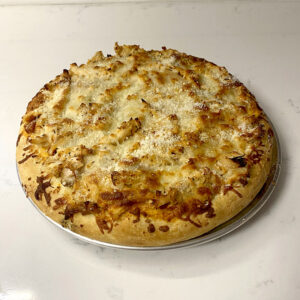Jan 21, 2024 | Waste Not Want More
If you have bread that is no longer fresh, don’t throw it away.
This recipe is easy to customize to your own taste or use up anything in the refrigerator. You pick the toppings. You can even half or double it. It’s very versatile and quick.
1/4 cup butter
Small container fresh mushrooms, stemmed, caps sliced
Diced red pepper
1/4 cup chopped onion
Diced Ham, chopped Bacon, or Real bacon bits, or cooked crumbled sausage
3 cups cubed bread
1 cup whole milk
1/2 cups half and half
3 large eggs
1/4 cup chopped onion
1 teaspoon thyme
2 garlic cloves, minced/ or 1 teaspoon dried garlic
1 teaspoons salt
1/2 teaspoon ground black pepper
1 cup cheese/ any cheese cheddar,smoked gouda
1 cup grated Parmesan cheese
- Toast bread then cut bread into cubes. Set aside.
- Preheat oven to 375°F. Butter 13×9 baking dish.
- Melt butter in large nonstick skillet over medium-high heat. Add mushrooms, pepper, and onion and sauté until tender, about 8 minutes. Season to taste with salt and pepper. Add meat of your choice and let cool.
- Combine bread and milk in large bowl. Let stand until milk is absorbed.
- Whisk half and half, spices, and cheeses in medium bowl to blend.
- Place half of bread mixture in single layer in prepared glass baking dish. The bread will might not cover bottom of baking dish. Top with half each of sautéed vegetables, and half and half mixture. Repeat layering with remaining bread and mixtures. Top with cheese. This can be prepared a day ahead. Just cover and refrigerate overnight.
- Bake strata uncovered until firm in center, puffed and golden. Bake time depends on the thickness and oven vary in temperature. Start checking for firmness at 35 minutes. Turn oven on broil to brown the top.
Any leftovers can be refrigerated for up to 4 days.
After baking you can put in freezer up to 3 months in an airtight container or freezer bag.
Jan 2, 2023 | Recipes
Ingredients
- 1 pizza crust mix prepared to bake/or any pizza crust
- 2 cups shredded rotisserie chicken
- 1 cup mozzarella cheese shredded
- 1/4 cup parmesan cheese shredded
Alfredo Sauce
- 1/4 cup butter
- 1 cup heavy whipping cream
- 1/4 teaspoon minced garlic (fresh or dried)
- 1 teaspoon garlic powder
- 1 teaspoon Italian seasoning
- Pinch of salt
- 1/4 teaspoon pepper
- 1/2 cup grated parmesan cheese
Instructions
- In a medium saucepan add butter, heavy whipping cream. Cook over medium heat and whisk until melted.
- Add the minced garlic, garlic powder, Italian seasoning, salt, and pepper. Continue to whisk until smooth. Add the grated parmesan cheese.
- Bring to a simmer and continue to cook for about 3-5 minutes or until it starts to thicken. Set aside.
Preheat oven 425F. Place pizza dough on a 10” pizza pan or 10” cast iron skillet or larger if you want a thinner crust. Spread 1/2 cup mozzarella on pizza, pressing down on dough, then spread shredded chicken, parmesan cheese and top with remaining mozzarella. Bake 25 minutes or until golden brown on top. Cool for 5 minutes then drizzle a little alfredo sauce* on top. Cool for 10 minutes. Serve the remaining alfredo sauce as extra dipping sauce for pizza.
*Adding too much alfredo to your pizza can make it soggy.
Dec 29, 2022 | Recipes
 1 pizza crust mix prepared to bake or a pizza crust
1 pizza crust mix prepared to bake or a pizza crust
- 1 teaspoon garlic powder
- 1/2 teaspoon onion powder
- 1/2 teaspoon oregano powder
- 1/4 teaspoon Basil
- Pinch kosher salt
- 1 cup rotisserie chicken cooked/ shredded
- 1/2 cup Frank’s Buffalo Sauce
- 2 cups shredded cheese -Asiago, mozzarella, Parmesan cheese or a variety of cheeses.
Preheat oven to 425F/220C. Mix the first 5 ingredients, sprinkle over shredded chicken. Add sauce and cheese. Mix thoroughly. Spread evenly over pizza crust. Bake for 25 minutes until cheese is golden on top. Drizzle more buffalo sauce before serving.

